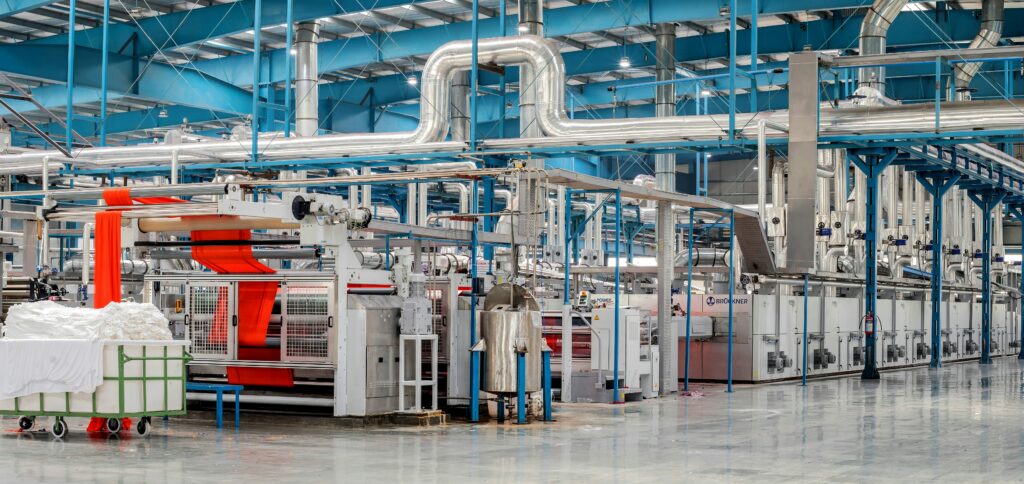Ironically, it’s more expensive than ever to make money in today’s climate. Business leaders in food and beverage – and beyond – need to consider the plethora of tools that could be at their fingertips, yet currently lay unused. Digital technologies can aid in more ways than you think, with the potential to improve processes and combat inflation for the food and beverage industry.
Recent inflation spikes are causing food and beverage manufacturers worldwide to face potential threats to profitability and risks to customer relationships. To prevent negative pricing-related fall out, food and beverage companies should take a broad view of their costs, product portfolio and margin strategies.
This will help put today’s economic volatility in perspective, avoid panicked responses and reinforce the continued need for making the business and supply chain more resilient and agile. Managed carefully, the current inflation challenges can become need-driven opportunities that embrace innovation and automation.
There are four common, inflation-related pain points that many food and beverage companies need to grapple with: ingredient shortages and disruption, the cost of maintaining the business (fuel prices, energy costs, transportation costs), customer experience and, finally, product innovation. Each of these prep-cooks of the inflation apocalypse may require several different coping mechanisms to keep at bay.
Ingredient shortages and disruption
In addition to extreme weather conditions and seasonal variability, conflict, supply chain disruptions and political pressure contribute to inflation and soaring prices for agricultural raw materials. The most recent example causing severe ingredient shortages is the Russian invasion of Ukraine. The war affected supply chains for exporting grain, wheat and vegetable oil, affecting food production globally.
While the war and other unforeseen circumstances may impact supply chains, it’s still key to work on improving visibility. With real-time visibility across the food supply chain-from the farmers and suppliers upstream in the supply chain, via processing, to the distributors and retailers downstream in the supply chain-food and beverage manufacturers can receive notice of shipment delays, allowing the procurement team to form and execute alternative plans.
Consider what else your procurement team can do for you. Have them review your product mix, as diversifying raw material and supplier options is another way food and beverage producers can mitigate the risks of ingredient shortages. Alternatively, scaling back on some products if the price increase can’t be justified (or absorbed) may be an unavoidable option.
Accept the fact that scaling back on some more premium products might be inevitable, but don’t forget the improvements that have already been made, and are available to you, throughout the supply chain. Modern supply chain planning solutions can help food and beverage companies achieve greater planning and forecasting accuracy. These solutions should have embedded machine learning (ML) to make the forecast more accurate and responsive to demand contributors such as the weather and price changes.
With the addition of predictive, machine learning forecasting, long term planning is much easier to undertake in a bid to save costs. Accurate forecasting and planning scenarios will help food and beverage manufacturers understand their long-term needs so they can confidently negotiate contracts with suppliers to guarantee availability. In some cases, prices can be locked in, protecting the food company from future price spikes.
Spiking fuel prices, energy costs and transportation costs
The shut-down of container ports during the pandemic is still felt in the global food supply chain. The rise in energy cost and fuel prices are again adding significantly to the cost of food products. All regions are impacted, even those with pipelines, fuel reserves and relaxed sustainability mandates.
Avoid the worst of shipping fees and loss of products by working on shipping strategies. Transportation costs are impacted by inflation, including container carriers, cargo planes and long-haul tractor trailers. Ensuring efficiency in shipping perishable products or raw ingredients may require choosing new suppliers that are closer to the manufacturer. Software that provides end-to-end visibility and cost analysis is critical to proactive procurement strategies.
Consumers prefer local and organic products where possible. As a trade-off, they will face limited choices and reliance on locally-sourced produce. Strategies for bringing production back from countries with low labor costs may require a fresh examination due to disruptions in shipping costs. When the savings achieved from low wages are eroded by high shipping costs, returning the production facilities to the home country is a logical step if there is an available workforce.
Occasionally, it may be more efficient to turn to third-party logistics companies (3PLs) as they can play a role in last-mile fulfillment. Working with 3PLs, like any strategic collaborative partner, is best managed via highly flexible cloud solutions that support data sharing while protecting security and data governance.
Customer experience and alignment
Inflation is severely impacting consumer spending worldwide. Some expect a recession is on the horizon – a prospect that’s further discouraging investment. Whether a food and beverage manufacturer should absorb price fluctuations or pass higher costs on to its customers is a classic dilemma. But shrinking packaging sizes and product value as a way of keeping prices stable can backfire as savvy consumers are becoming more aware of changes. Unfortunately, consumers who feel as if the wool has been pulled over their eyes are quick to spread the news to social media.
One of the first aspects to suffer scrutiny is manufacturing. Manufacturers may be tempted to replace suppliers or ingredients to save costs, but that doesn’t come without the risk of non-conformance with the product declaration. Product lifecycle management solutions can simulate the impact of a new supplier or ingredient on the product specification, avoiding quality loss and non-compliance.
While quality and compliance can’t be sacrificed, food and beverage manufacturers should offer more economical options in their product portfolio. This may include scaling back products or evaluating the use of ingredients that are becoming difficult to obtain. Product lifecycle management solutions can help manufacturers reduce the time needed to develop and manage new products, as well as achieve regulatory and labeling compliance.
Now that the product life cycle has been addressed, it’s time to sort through warehouse inventory. Being strategic about warehouse inventory will enable manufacturers to better manage cash flow and minimize the amount of capital tied up in inventory. As supply chain disruption has changed the way manufacturers think about just-in-time delivery, expanding stock levels must be carefully considered to avoid the risk of waste due to expired ingredients or obsolete packing materials. Inventory planning software can help manufacturers understand the nuances of different strategies to pick the right course of action.
Never forget how much automation can affect your processes. If you can’t adjust a recipe and the customer base is opposed to price increases, improving productivity and efficiency through automation may be the best option to counter the impact of inflation. Automation can range from eliminating redundant data entry and streamlining workflows to adding image recognition with machine learning (ML) to automate labor-intensive tasks that previously required human eyes and decisions.
Product innovation
Manufacturers can turn to innovation to help alleviate the pressures caused by inflation and the increased costs of ingredients. But to truly seize opportunities for product innovation, manufacturers must work to eliminate IT silos between departments. This helps ensure that everyone has access to the same data, business systems and processes which enables companies to quickly introduce new products that will appeal to consumers.
Sometimes it can be as simple as introducing new recipes. The ability to recalculate recipes and product specifications when inflation is causing food companies to switch suppliers or change ingredients is crucial and something that is too complex and time-consuming to be left to spreadsheets. A modern product lifecycle management solution can manage the process efficiently, optimizing specifications, costs and sustainability.
Another way manufacturers might confront inflation is by setting up new branches, new sales initiatives or new go-to-market models. Cloud solutions offer rapid deployment, making agile response possible. Two-tier systems, also supported by highly flexible ERP solutions, may provide a quick way to branch from an existing enterprise and its ERP system, yet take advantage of new, modern functionality.
Overcome volatility
The four prep-cooks of the inflation apocalypse have ravaged the food and beverage manufacturers hard in all parts of the world. Economic experts predict that volatility and high costs may be challenges that won’t be resolved quickly. Manufacturers can counteract increased costs by examining their supply chain processes, services and product portfolios. Modern cloud-based ERP solutions can help companies make data-based decisions and find innovative solutions to inflation-induced issues. Being proactive and strategic can differentiate manufacturers and set them apart from the competition.





